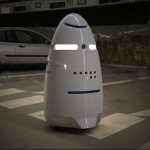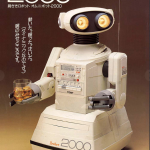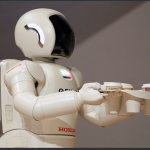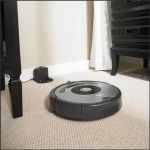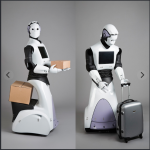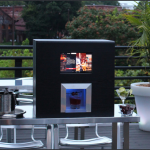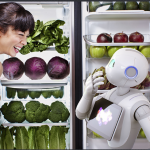Gadget of the week


By Jon Turi From engadget
Chores are the bane of domesticity. Dull and repetitive tasks have already been farmed out to robots in industrial workplaces, so why not our homes, too? On a small scale, they’ve already arrived, just not quite in the way film and TV promised. For this week’s Rewind, we take a look at some of the highlights in the history of robotic servants.
Arok and roll
During the ’70s, inventor Ben Skora had taken it upon himself to build a home of the future. But aside from devising remote-controlled fixtures, he also built himself a 7-foot-tall robotic servant named Arok. This metallic behemoth was able to take out the trash, serve drinks and walk the dog — with Skora at the controls, at least. Arok was far from autonomous (and very much a gimmick), but it was a stepping stone toward building a Jetsonian future.
[Image: AP Photo/Charles Kelly]
Image Credit: AP Photo/Charles KellyA grown-up toy
One of the many little robots borne of the ’80s was the Omnibot 2000. Released in 1984, this was one of toy-maker Tomy’s top-of-the-line robots on the market. Omnibot 2000 was remote controlled, but could be “programmed” (by recording movements on cassette tape) to perform tasks like pouring a drink.
[Image: Tomy via Pinterest]
Our robot friend
One of the most famous humanoid robots today was born in 2000 at Honda’s labs in Japan: ASIMO (Advanced Step in Innovative Mobility). This robot’s been in the works for over a decade with Honda making great progress in improving its balance, speed, agility and human interaction.
ASIMO can shake hands in sync with natural movement and, more importantly, serve a tray of beverages to thirsty humans.
Make room for Roomba
Although there have been quite a few attempts at developing affordable domestic-service robots, very few have found a place in our homes. One of the most ubiquitous success stories was iRobot’s Roomba, which launched in 2002. Its primary directive is to clean floors autonomously, and it does a decent job at it.
Image Credit: iRobot
Helping hands
Barcelona-based PAL Robotics has been developing service robots with human attributes since 2004, when four engineers began building the REEM-A.
In 2012, the company launched its first commercial product, the REEM. Not only can this human-sized servant help with luggage and cumbersome loads, but it can also serve as a telepresence hub and an informational kiosk. Since its release, the company has switched back to the two-legged design with its more recent REEM-C model.
Image Credit: PAL Robotics
The age of the bar-bot
One of the most common features in robots over the years has been the ability to serve drinks. Some, like Monsieur, are simply boxes that utilize tablets and features like geofencing to know when to pour you a “welcome home” beverage. Others are DIY Arduino projects for crafty cocktail enthusiasts. More elaborate offerings, like those from Makr Shakr on Royal Caribbean’s Quantum of the Seas, tend to look a bit like former Tesla assembly line workers.
Image Credit: Monsieur
More kawaii than killer
Aldebaran is another longtime name in home robotics. Some of the company’s bots are all about getting down on the dance floor, but others, like Pepper, were built for helpful human interaction.
This 3-foot, 11-inch humanoid-like robot is currently cutting its teeth in customer service at Japan’s SoftBank phone stores, but should be heading to homes by 2016. Pepper isn’t really built for hard labor; its “killer app” is all about cuteness overload and advanced socializing skills.
Image Credit: Aldebaran Robotics
Nightwatch bot
Who needs lazy security guards when you’ve got a security bot?
Knightscope’s 5-foot tall, egg-shaped K5 security robot can make the rounds, search for intruders and even report back to home base using a cellular or WiFi connection. Currently, only four units are scheduled to hit the pavement by the end of the year.
Image Credit: Knightscope
For more on this story go to: http://www.engadget.com/2014/11/23/the-rise-of-the-robotic-servant/?ncid=rss_truncated#/

